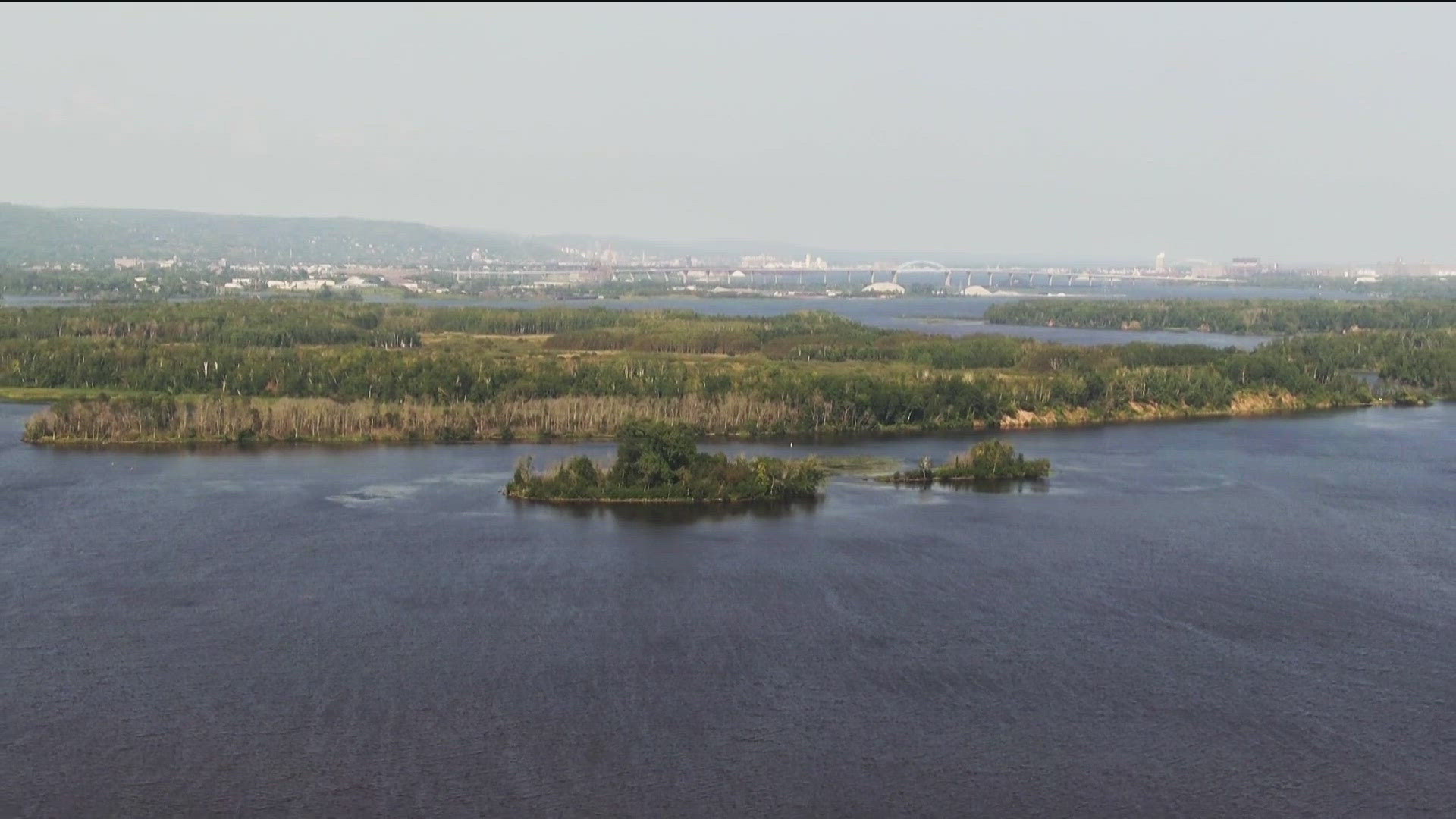DULUTH, Minn. — From polluted to pristine. This is a story of a new waterfront recreation area in Duluth that opened, or rather reopened, this summer.
It took millions of dollars, coordinated efforts, and lots of hard work to help it come back to life.
“I think we’re all proud of what this has become,” said Cliff Knettel with Duluth Parks and Recreation.
Cliff is talking about Spirit Lake in the St. Louis River area of Duluth. It’s likely you haven’t visited before, because there wasn’t much to see. Long ago it was a stopping point for the Anishinaabe people. It became a central part of trading and led to the industrialization of the city of Duluth.
Along with that came U.S. Steel. The company operated a plant there until 1981. However, decades of production contaminated the water and land with heavy metals, putting the St. Louis River on the EPA's area of concern list.
In 2010, through the Great Lakes Legacy Act, a plan was hatched to clean it up.
“All in, it was $185 million to get through all those phases of design, investigation, feasibility, actually implementing, so it's a very large investment from EPA and US steel, those are the two entities that were contributing financially,” said Mark Loomis, with the U.S. EPA – Great Lakes National Program Office.
Remediation started in 2020. Dredging, capping and restoring habitat all while maintaining water depth for the fisheries. Loomis said the work was nearly 24/7 for 38 months.
"We built over two miles of trails, ADA accessible, dedicated fishing areas, pause points, there’s a landing area for kayaks,” he said. “There was a large area, actually a mud flat, that we actually excavated, removed material to create open water. It's a very unique part of this project."
The city of Duluth owns much of the shoreline and this project has opened up access for many people who didn't have it before. If you're not familiar with the area, this is on the west side of town, not near the lakefront.
“We're actually working with the St. Louis River alliance and our own parks and rec staff to offer programs that we couldn't offer before like fishing, like paddling, like nature hikes, like educational opportunities, so those are happening right now and we're super excited about that,” said Knettel.
The cleanup will eventually lead to the St. Louis River being delisted as an area of concern, but the biggest win for those involved is seeing the space go back to what it should be.
“Watching the people come back to the site, kind of breathing life into it and the river is there and wildlife is responding. Those are the things that really kind of drive me professionally and personally,” said Loomis.
The E.P.A. said it worked closely with tribal communities to preserve the cultural significance during the project. Signage that explains the history and process of the project will go up next summer.

